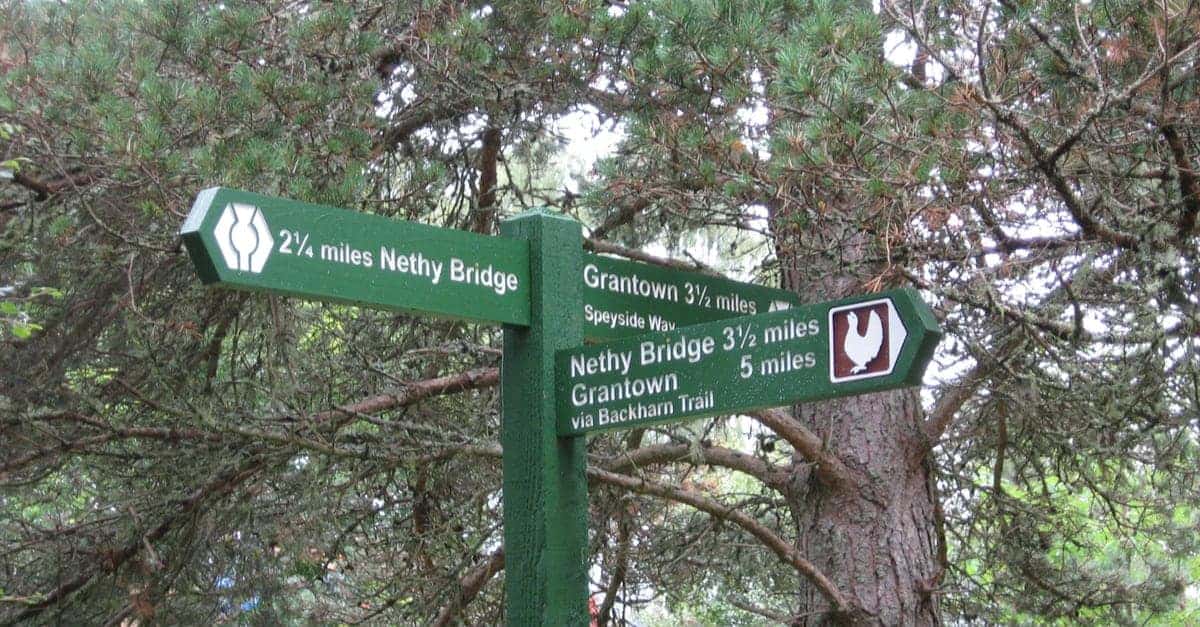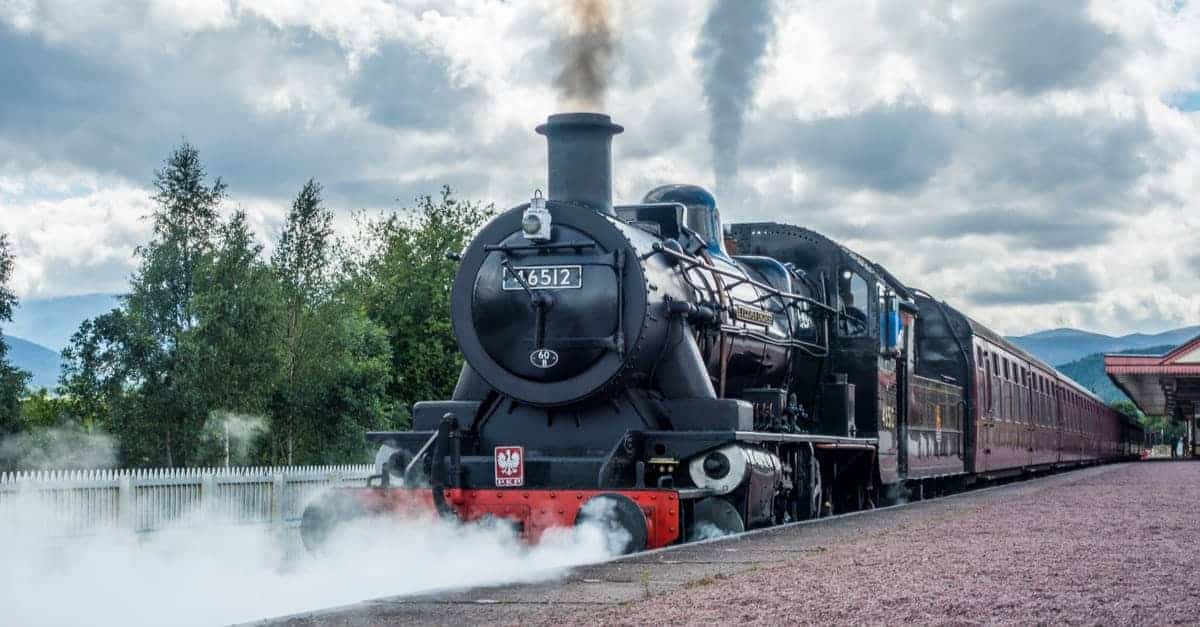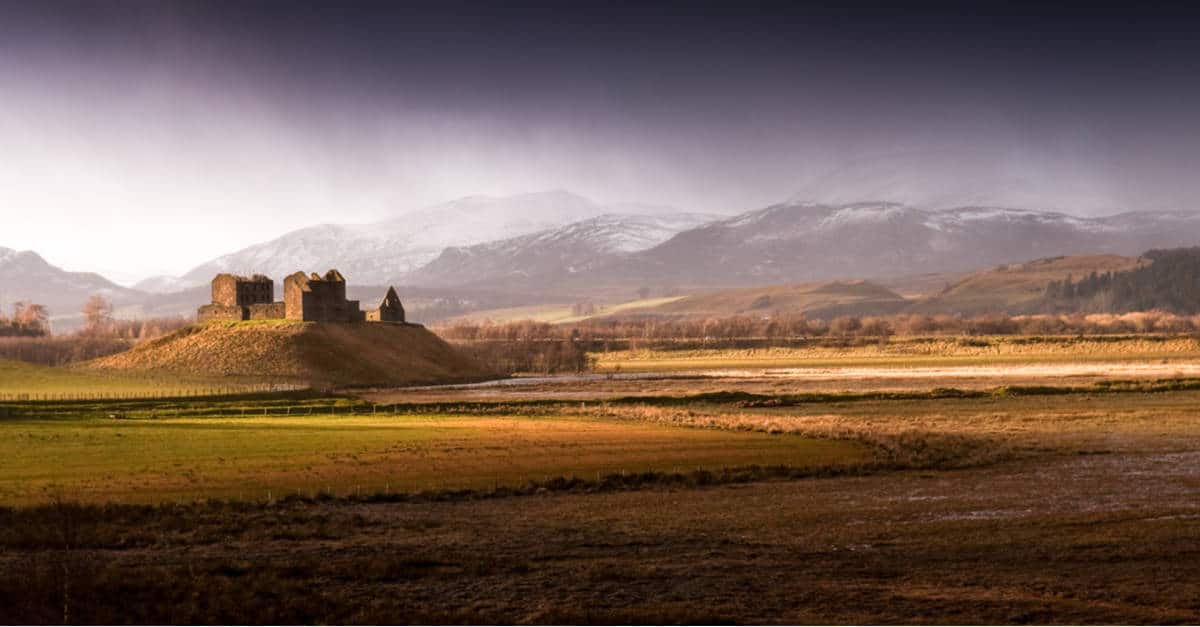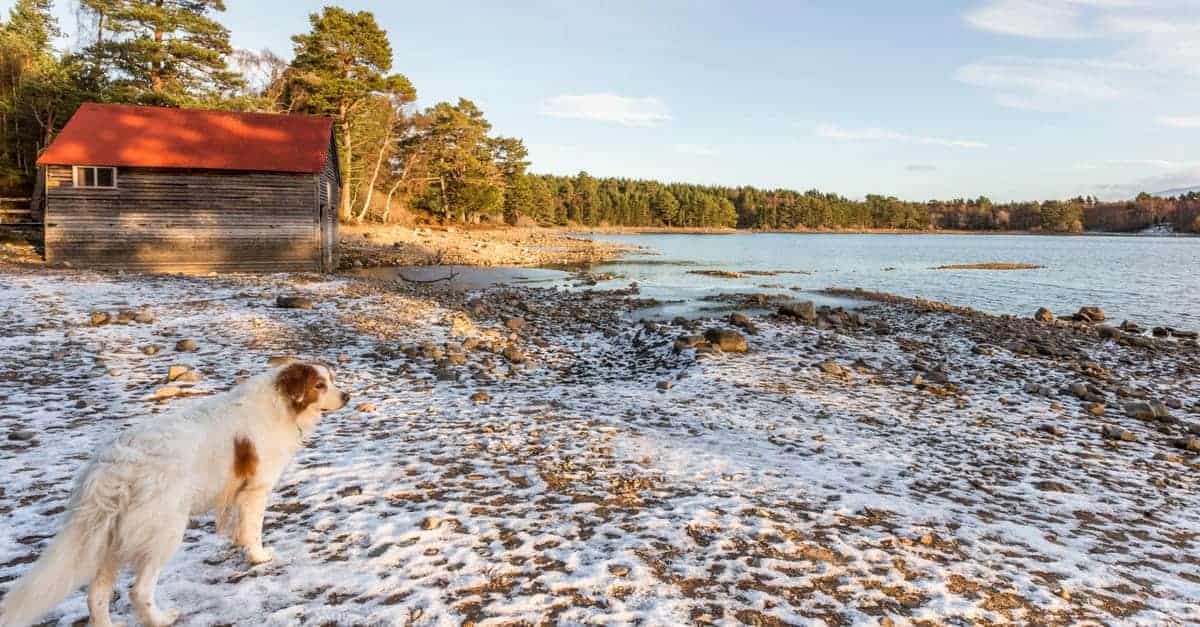The region of Speyside is famous for its beautiful fishing spots and the high density of whisky distilleries in the area. But it’s also a top-notch destination for a walking holiday.
Ever since I read an article about the Speyside Way, its beautiful landscape, traditional pubs, and rich culture and history, it had been on my bucket list.
After finally completing the trail in three go’s, I must admit that the author of the aforementioned article was right—the Speyside Way is indeed the perfect way to experience the northeast of Scotland.
I’ve written a guide for those who are more interested in long-distance walks than whisky tasting. It includes all the information I gathered from my adventures up North: when to go, what to bring, and how to plan your itinerary.
Overview
- Length: 85 miles
- Region: North East Scotland
- Start: Buckie, Moray Council Area
- End: Newtonmore, Highland Council Area
- Time required: 6 to 9 days
- When to walk: May to September
- Difficulty: Moderate
- Traditional direction: North to South
The Speyside is one of the official Great Trails of Scotland. It starts at Buckie, on the north coast of Scotland, loosely following the course of the mighty River Spey and its valley onto Newtonmore, a lovely village located in the heart of the Scottish Highlands.
I say loosely because the route often diverges from the river to follow disused railway trackbed or to cross open moorland. There is also an optional, hilly section from Ballindalloch to Tomintoul.
The region is famous for its whisky production, boasting more than fifty distilleries. A few of them are near the trail. I remember often smelling them before seeing them.
I should also note that the handful of fishermen I met in local pubs argued that the Spey is equally famous for its fishing.
Aside from offering a one-of-a-kind distillery experience, the Speyside Way offers beautiful, diverse scenery.
Other highlights of the trail include Highland wildlife, including the endangered Scottish wildcat, red squires, capercaillie, as well as a great range of habitats (such as the coastal, Caledonian pine forest).
The Speyside Way links to a few other long-distance routes in Scotland. It connects with the Dava Way at Grantown-on-Spey and to the Moral Coast Trail at Buckie. It also links to the unofficial East Highland Way.
About 2,750 people complete the entire Speyside Way each year.
Some sections of the official long-distance route are suitable for cycling and horseback riding as well.
History of the Route
The Speyside Way was first opened in 1981. Originally, the trail ran from Spey Bay to Ballindalloch. The extension from Buckie to Spey Bay was added in 1999, and the extension from Ballindalloch to Aviemore followed in 2000. An extension from Aviemore to Kincraig was added in 2015.
The latest extension of the trail (Kincraig to Newtonmore) is yet to be officially opened, but it is walkable. Although it’s not completely waymarked, I completed the final section of the trail last year without any problems. Check the Cairngorms National Park website for updates on the Newtonmore extension.
The Challenge
Because the overall ascent is relatively gentle and modest (4,085 ft), and because the facilities along the route are plentiful, the trail is generally suitable for beginners.
For comparison—the West Highland Way, one of Scotland’s most famous long-distance routes, has a total ascent of around 12,790 ft.
Over long stretches, the route uses good-surface footpaths, forest trails, and old railway lines.
You can easily split the longer sections of the path (such as the ones between Grantown and Aviemore and Aviemore to Newtonmore).
Apart from the Tomintoul detour, the most challenging stretch of the route is the section between Ballindalloch and Grantown.
Direction
Even though the route officially starts at Buckie, you can walk it in either direction. I stuck to the official itinerary and walked the Speyside Way north to south.
Before the SW, I hadn’t been on a long-distance walking holiday in ages. Since the sections near the coast are flatter, I saw them as a chance to build up my fitness again. Moreover, I got great views of the Cairngorms.
The main argument for walking the route the other way is that you will have the prevailing winds behind you.
All of this said, there are steep ascents and descents in each direction.
Waymarking and Navigation

With the exception of the final section, the Speyside Way is well waymarked throughout.
However, the Tomintoul Spur crosses wild exposed moorland to the highest village in the Highlands. Even though this section is waymarked as well, visibility can be poor due to hill fog.
If you want to include the Tomintoul detour in your itinerary, map-and-compass competence is a must. In fact, I would recommend this section only to experienced and well-equipped hikers.
You have the option of breaking this section at the Glenlivet Distillery.
I downloaded a map of the route to my GPS device, but I also brought the Cicerone Guide by Alan Castle with me. It includes a map booklet of 1:1:25,000 scale OS maps.
The Cicerone guidebook was last updated in 2019. Rucksack Readers also offer a great guide for the route. The last edition was published in 2016, but a new one will be published in August 2021.
If you only need a paper map, I recommend buying the dedicated Harvey Map or OS maps for the region.
Getting There

By Public Transport
To get to Buckie, first, you need to reach the Keith railway station. Travel to Inverness, Aberdeen, or Edinburgh for connections to Keith station.
The simplest way to get from Keith station to Buckie is by taxi. However, many taxis charge mileage from their base and their fares are pricey (the Moray Council rate is 3 quids per mile).
I choose to take the bus instead. Do know that the bus service between Keith and Buckie is limited. Alternatively, you can get to Elgin (also lies on the railway line between Aberdeen and Inverness) and take the Stagecoach bus no.35 to Buckie.
There are direct bus services to Buckie from Aberdeen and Inverness. However, this option is very slow.
Newtonmore lies on the main railway lines between Edinburgh and Inverness and between Glasgow and Inverness, so you won’t have a hard time getting back home. The village is also well served by bus services.
However, travelling between sections of the trail by public transport can be difficult. Buses are linked to school term-time or they run on certain days only.
Bus services are even less frequent south of Aberlour. If you plan on walking the Tomintoul Spur, getting back to Ballindalloch by public transportation will require some local knowledge and a lot of perseverance.
I opted for a more convenient option and booked a taxi ride from Tomintoul to Ballindalloch. It wasn’t cheap, though.
Visit the Traveline Scotland website for more information on public transportation.
By Air
There is an airport in Inverness. Depending on your starting point, Aberdeen, Edinburgh or Glasgow airports may also be relevant.
EasyJet flies directly from London and various regional airports (Southampton, Manchester, Bristol, Birmingham) to Inverness. The company also offers direct flights from Belfast to Inverness.
By Ferry
Passenger ferries no longer operate between continental Europe and Scotland.
You can take the ferry from Zeebrugge, in Belgium, to Hull, in England, and then make your way to Scotland. Alternatively, you can take the ferry from Amsterdam to Newcastle.
Best Time to Walk the Speyside Way

Technically, you can walk the Speyside Way at any time of the year. With the exception of the Tomintoul Spur, the sections of the route are predominantly in the low-lying country.
Still, I’d advise against walking the Speyside way in winter. The Speyside Way stretches across one of the coldest parts of Britain. In the wintertime, severely cold weather is not unusual.
Moreover, buses are even less frequent on winter timetables. Many B&Bs, services, and facilities along the route are closed from late October to late early April.
For beginners or the ill-prepared, walking the Way in winter can be a dangerous venture. Unless you live near the route and plan to do it as a series of short day walks, you should definitely pick another season.
Generally, the months from April to September are a favourable time to walk the Speyside Way. In my opinion, the best months for hiking the Way are May and October. The average rainfall is relatively low, the temperature rises and the days are long during these two months.
All of this said you should be prepared for windy, wet, and cold weather at any time of year. The weather in Scotland is unpredictable, and, as you may have already heard, you might experience ‘four seasons in one day.’
Beware of Floods and Storms

During the wet spring and autumn months, flooding of the River Spey and other rivers in the area is not uncommon. The trail can be extremely wet underfoot during heavy rains or when the winter snow melts from the mountains.
The way can be dangerous, if not actually impassable, during such events. Gale-force winds, heavy rain, and violent storms are more common in late autumn but can occur at any time of the year. Buckie on the Moray Firth is particularly prone to strong winds.
Itinerary for Speyside Way
It takes between 6 and 9 days to complete the walk. If you plan on walking the Tomintoul Spur or going sightseeing in the area, add a couple of days to accommodate for detours.
It took me 9 days to walk the whole route (Tomintoul Spur Included). Keep in mind that I walked the trail in different phases. This is what my itinerary looks like when pieced together:
My 9-Day Itinerary
- 1st Stage: Buckie to Fochabers—10 miles
- 2nd Stage: Fochabers to Craigellachie—12.5 miles
- 3rd Stage: Craigellachie to Ballindalloch—12 miles
- 4th Stage: Tomintoul Spur (Ballindalloch to Tomintoul)—15 miles
- 5th Stage: Ballindalloch to Grantown—14.5 miles
- 6th Stage: Grantown to Boat of Garten—11 miles
- 7th Stage: Boat of Garten to Aviemore—6 miles
- 8th Stage: Aviemore to Kincraig—6.5 miles
- 9th Stage: Kincraig to Newtonmore—13 miles
Accommodation and Camping on the Speyside Way
I walked the Way over three walking holidays. My first walking holiday on the Way (Buckie to Craigellachie) was a combination of camping and wild camping. When I walked the rest of the route (Craigellachie to Aviemore and Aviemore to Newtonmore), I stayed at hotels and B&Bs.
There are plenty of accommodation options in the region. However, I walked the Way without a support vehicle, so my choices were a bit limited.
If you plan on staying in B&Bs or hotels along the route, I advise you to book accommodation well in advance.
Buckie
The town of Buckie on the Moray Firth coastline offers independent hostels, hotels, and B&Bs. Just east of the town, at Strathlene, there is a campsite.
There are a few shops in the town as well. There is also a B&B at Spey Bay further down the route.
All of this said I wouldn’t necessarily recommend staying here. There is not much to do in the town, and the whole place is pretty run-down.
If you plan to walk the route south to north and finish in Buckie, I recommend getting on the bus to Banff or Cullen for some seaside relaxation.
Fochabers
There are a few hotels in Fochabers, including the Gordon Arms and Grant Arms, and a choice of B&Bs.
I stayed at the Burnside caravan park, located on the eastern edge of the village, as I was camping. The campground was nice and affordable, with showers and toilets.
Craigellachie
Craigellachie offers both B&B and hotel accommodation, even though it’s a small village. I pitched my tent at the official camping area at Fiddich Park.
This free, ‘first come, first served’ campground has working toilets and fresh water. The facilities are open until late October.
Aberlour, an alternative break of this stage, is further along the Way. It has a wide choice of guest houses and hotels. There is also one campground, but it’s quite far out of the village.
Ballindalloch (marked Cragganmore on some maps)

I camped at the semi-wild campground at Ballindalloch station. There were no facilities except for a seasonal toilet and a picnic table. Since something had come up, I headed back to Glasgow the next day.
Several weeks later, when I finally found the time to complete the stretch between Ballindalloch and Aviemore, I decided to leave my tent back at home and sleep at B&Bs or hotels.
I was lucky enough to be able to book a room in the hotel near the route, as there is only one hotel and a couple of B&Bs in the village.
Alternatively, you can stay at Cromdale. There is a B&B and a hotel/pub in Cromdale.
Grantown on Spey
There are excellent services in Grantown on Spey. On top of a wide choice of B&Bs and hotels, there is also hostel accommodation and a large campsite on the northwestern fringe of the village.
Nethy Bridge on the River Spey

This village has two B&Bs, two hotels, an independent hostel with a campsite, and a shop.
Boat of Garten
The next village on the trail offers a hotel, a couple of guest houses, and a shop. There is one campground along the route, just before the village, and another one in Boat of Garten.
Aviemore
Aviemore is a popular and busy tourist resort that offers great views of the Cairngorm Mountains. Because of this, accommodation in Aviemore can be expensive and hard to find.
The town offers a wide range of hostels, hotels, B&Bs as well as camping.
Kincraig
There are no shops in the village. I recommend stocking up at the small shop in Dalraddy. There is a great cafe in the village, though, as well as hotel and B&B accommodation.
Newtonmore and Kingussie
You will find a range of shops as well as all types of accommodation (hotels, hostels, and B&Bs) in Newtonmore and Kingussie.
Tomintoul

Tomintoul has several eateries, but only one shop for basic supplies. There is also a tourist visitor centre in the town. The town offers both B&B and hotel accommodation.
Wild Camping

As long as you comply with the Scottish Outdoor Access Code, you are well within your rights to wild camp along the Way.
If you plan on wild camping, I strongly advise you to stick closely to the official long-distance route. But avoid camping near livestock, gates, and people’s homes in general. The Annandale Way is also a great trail for campers.
Luggage Transfer
If you want to have luggage transfer arranged for the whole route, it may be best to book a self-guided tour. Alternatively, you can hire one of the taxi companies in the North to transfer your luggage.
Accommodation providers who offer pickup services may also offer to transfer your luggage to your next stop on the route.
Other FAQs About the Speyside Way

What Should I Pack For the Speyside Way?
To make sure you’ll have a good time on the Speyside Way, I suggest bringing:
- Hiking map (GPS map and a paper backup)
- Rainwear (waterproof hiking pants and jacket)
- Reusable water bottle
- Snacks
- Sun protection
- Hiking socks
- Comfortable walking shoes
- Base and mid-layers
- Dry bags
- Trowel and loo stuff (if wild camping)
- First aid kit
- Water filtration stystem (check out my reviews of the best backpacking water filters)
- Hydration reservoir
Make sure to bring a big enough backpack. If you plan on using a baggage transfer service for your gear, a daypack should suffice. Check out our post on hiking the Arran Coastal Way as well.
Can I Walk the Speyside Way With my Dog?

Well-behaved dogs are welcome on most sections of the route. But, to ensure a less stressful lamping time for crofters and farmers, it may be best to avoid walking the Speyside Way with your dog in spring.
I advise dog-walkers to avoid walking the section between Ballindalloch and Cromdale, at any time of the year, because of the likelihood of encountering livestock.
Before you head out, make sure to read this guide for dog-walkers.
What Are Some of the Highlights of the Speyside Way?

Some of the Highlights of the Speyside Way include:
- Gorgeous views of the River Spey
- The old railway between Aviemore and Broomhill and its historic steam locomotive
- Cairngorm Mountains and the Cairngorms National Park
- Beautiful bridges ( such as the Craigellachie Bridge and the Old Packhorse Bridge)
- The local whisky distilleries
- WDC Scottish Dolphin Centre (wildlife visitor centre located at the mouth of the River Spey)
- Historic castles
- Forest trails, river valley, lonely moors, and amazing wildlife
Can I Cycle the Speyside Way?
It’s not possible to cycle the entire Speyside Way.
Sections between Fochabers and Ballindalloch and between Nethy Bridge and Aviemore are suitable for cycling.
The ‘off-road’ sections between Ballindalloch and Cromdale and between Ballindalloch and Tomintoul are not suitable for cycling.

I love hiking, backpacking, and camping. From the Camino de Santiago to the West Highland Way in Scotland or simply a great day hike on the weekend. Hiking refreshes me, my mind, and keeps my body reasonably fit. So far I have walked three Camino routes and many other long distance hikes in the UK, Canada, and around the rest of Europe. One of the best was my hike up Ben Nevis.

